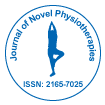Наша группа организует более 3000 глобальных конференций Ежегодные мероприятия в США, Европе и США. Азия при поддержке еще 1000 научных обществ и публикует более 700 Открытого доступа Журналы, в которых представлены более 50 000 выдающихся деятелей, авторитетных учёных, входящих в редколлегии.
Журналы открытого доступа набирают больше читателей и цитируемости
700 журналов и 15 000 000 читателей Каждый журнал получает более 25 000 читателей
Индексировано в
- Индекс Коперника
- Google Scholar
- Открыть J-ворота
- Генамика ЖурналSeek
- Академические ключи
- БезопасностьЛит
- РефСик
- Университет Хамдарда
- ЭБСКО, Аризона
- OCLC- WorldCat
- Публикации
- ICMJE
Полезные ссылки
Журналы открытого доступа
Поделиться этой страницей
Абстрактный
Physical Activity and Quality of Life among Sports? Participants and Non-Sports? Participants: A Comparative Study
Bolarinde Samuel Olufemi, Akeebsodiq Olalekan, Aiyeyemi Hephizbah Titilayo, Akinsete Fayokemi
Background: The adverse health consequences associated with being physically inactive include the increased risk of various diseases such as diabetes, breast and colon cancers, stroke, hypertension, and coronary heart disease. Physical Activity (PA) has been shown to improve general health and Quality of Life (QoL) across diverse population.
Objective: This study assessed the relationship between PA level and QoL of hospital staff participating in workplace-based fitness program and non-participating members of staff
Methods: The comparative study recruited 56 staff of Federal Medical Center, Owo, Nigeria. 28 were those that regularly participated in the hospital-based weekly aerobic/sports activities in the institution while 28 were nonparticipants in the weekly exercise program. Data was obtained using the International Physical Activity Questionnaire (IPAQ) and the Quality of Life Bref (QoL-Bref) Questionnaire.
Results: The result shows a significant difference in the Moderate level of physical activity between sports’ participating and non-sports’ participating respondents (P<0.05), while, there was no significant difference in the Low, High and Overall Physical Activity level between the two groups. The result also showed a significant difference in all the domains of quality of life between sports’ participating and non-sports’ participating respondents (p<0.05). Similarly, there was a significant difference in the overall quality of life between sports’ participating and non-sports’ participating respondents (p<0.05).
Conclusion: Participation in workplace-based aerobic exercises does not significantly affect the overall physical activity level but have a positive significant effect on the quality of life of participants.
Журналы по темам
- Биохимия
- Ветеринары
- Генетика и молекулярная биология
- Геология и науки о Земле
- Еда и питание
- Иммунология и микробиология
- Инженерное дело
- Клинические науки
- Материаловедение
- медицинские науки
- Науки об окружающей среде
- Общая наука
- Сельское хозяйство и аквакультура
- Социальные и политические науки
- Уход и здравоохранение
- Фармацевтические науки
- Физика
- Химия

 English
English  Spanish
Spanish  Chinese
Chinese  German
German  French
French  Japanese
Japanese  Portuguese
Portuguese  Hindi
Hindi